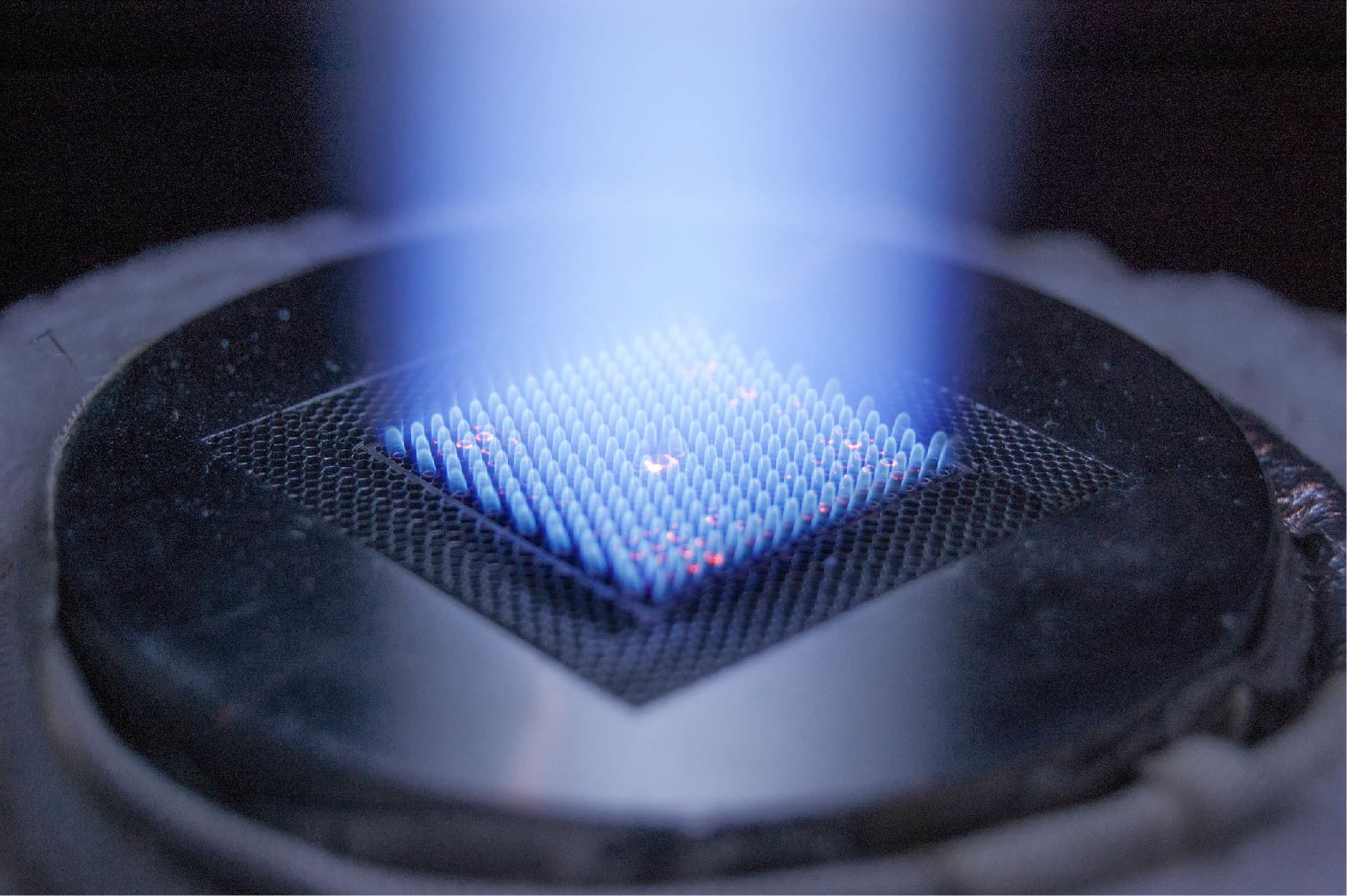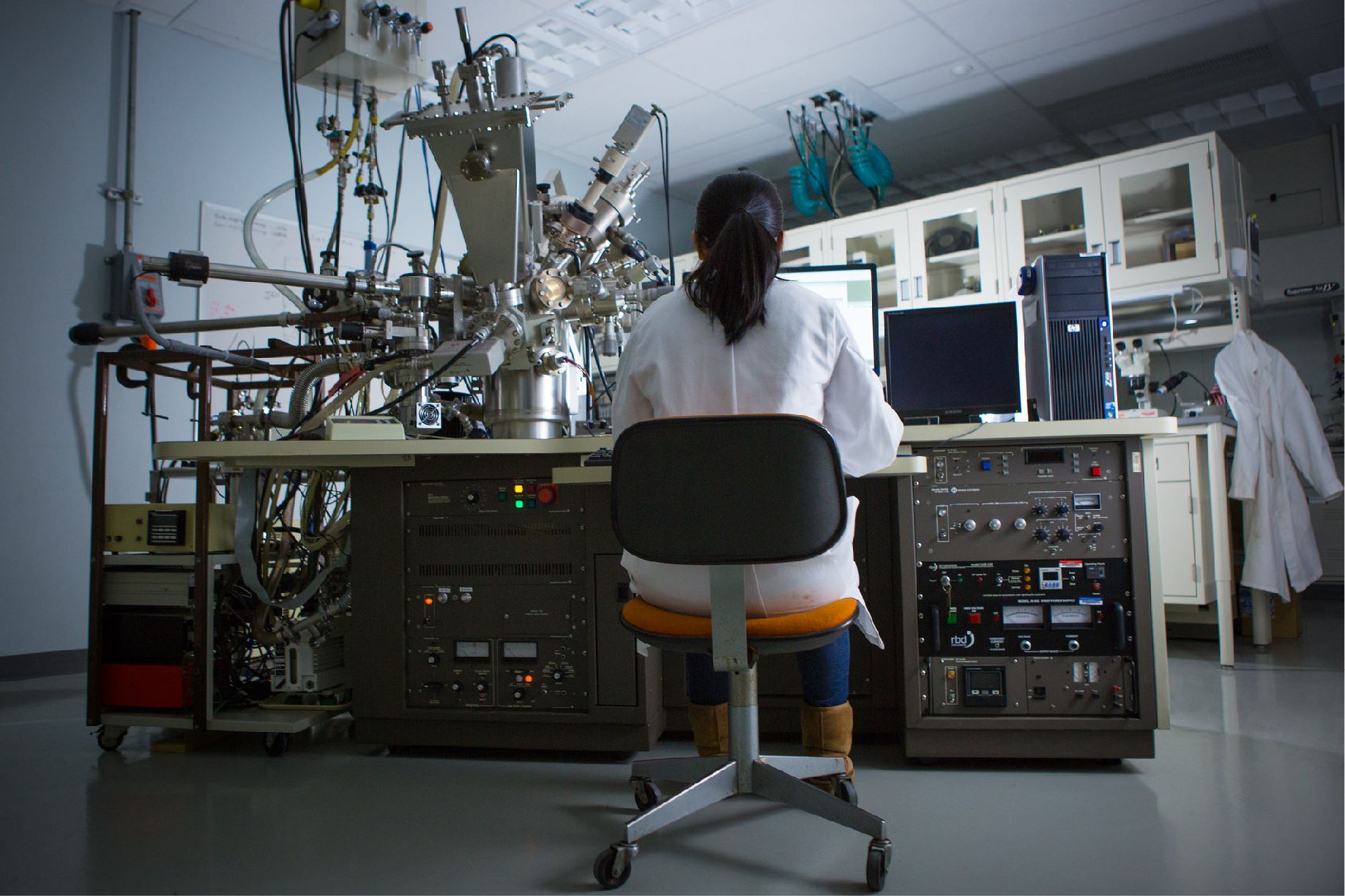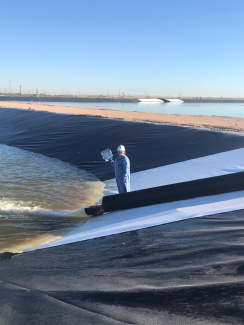NETL researchers demonstrated that naturally occurring signals in underground fluids can serve as effective indicators of flow patterns between existing oil and gas wellbores — a discovery that can help decision makers understand the interactions between wells to optimize the efficiency and safety of oil and gas production.
Fluid flow between drilled wells is known as well-to-well communication. NETL experts estimate that currently, 70% of new wells are “child wells” — wells drilled in proximity to producing wells known as “parent wells.” Keeping track of well-to-well communication between the wells is important for optimized fracturing operations and to prevent potential problems.
Unexpected fluid migration between wells results in inefficient production, increased leakage risks and increased levels of extracted waste fluid, known as produced water, that requires treatment or disposal.
Djuna Gulliver, research engineer with NETL’s geochemistry team, explained that complex flow patterns and reactive transport mechanisms may not be accurately defined using just flow rates and pressure measurements obtained through inserted monitoring devices. She said the naturally occurring signals can delineate unexpected processes such as reactive transport — how the fracture fluid moving through the shale is reacting and changing the shale geochemistry.
NETL has successfully evaluated the geochemistry and microbiology of four different unconventional oil and gas plays through comprehensive studies over the past ten years. The group collected data that demonstrated a signal of well-to-well communication in the produced fluid.
“NETL has shown that we can identify much of the complex flow information with fluids from the existing well infrastructure. Substances already present in the underground fluids can serve as signals to track fluid movement, reactivity and connectivity between wells,” she said. “Pinpointing these signals can reduce the need to install new monitoring equipment in wells already in place.”
James Gardiner, a research geologist on NETL’s geochemistry team, described how researchers look for specific geochemical and microbiological signals to identify well-to-well communication in the field.
“Unconventional wells often have fractures that extend into parent wells. NETL has observed that affected parent wells will often exhibit a decrease in salinity coupled with an increase in dissolved sulfate. These wells also had microbial data that was significantly different from unaffected wells. The groundwater used in the hydraulic fracturing fluid had low salinity, high dissolved sulfate and distinctive microbial data. These geochemical and microbiological changes indicate well-to-well communication and suggest potential chemical reactions in the reservoir that could affect well production.”
Additionally, the combined geochemical and microbiological signal indicated reactive transport, followed by microbial activity potential that could lead to increased hydrogen sulfide production. Hydrogen sulfide is known to decrease the quality of production, cause infrastructure corrosion, and increase operator hazards.
NETL’s work will lead to tools and guidance for managing well-to-well communication. Plans are for the tools to eventually include modeling to determine the impact of fluid migration on affected wells and a workflow for the near-real-time interpretation of data for well-to-well communication recognition.
Understanding the well-to-well connectivity is important even after wells are no longer producing oil or gas.
“As operators maintain and convert wells for alternate usage or retirement, they must consider those wells as a connected subsurface,” Gulliver said. “Even after retirement, many wells are often still assessed as singular, impermeable environments when, in reality, fluids flow and interact with the rocks between these wells. To manage existing wells into the future requires an accurate understanding of these subsurface systems.”
NETL is a U.S. Department of Energy (DOE) national laboratory dedicated to advancing the nation's energy future by creating innovative solutions that strengthen the security, affordability and reliability of energy systems and natural resources. With laboratories in Albany, Oregon; Morgantown, West Virginia; and Pittsburgh, Pennsylvania, NETL creates advanced energy technologies that support DOE’s mission while fostering collaborations that will lead to a resilient and abundant energy future for the nation.




